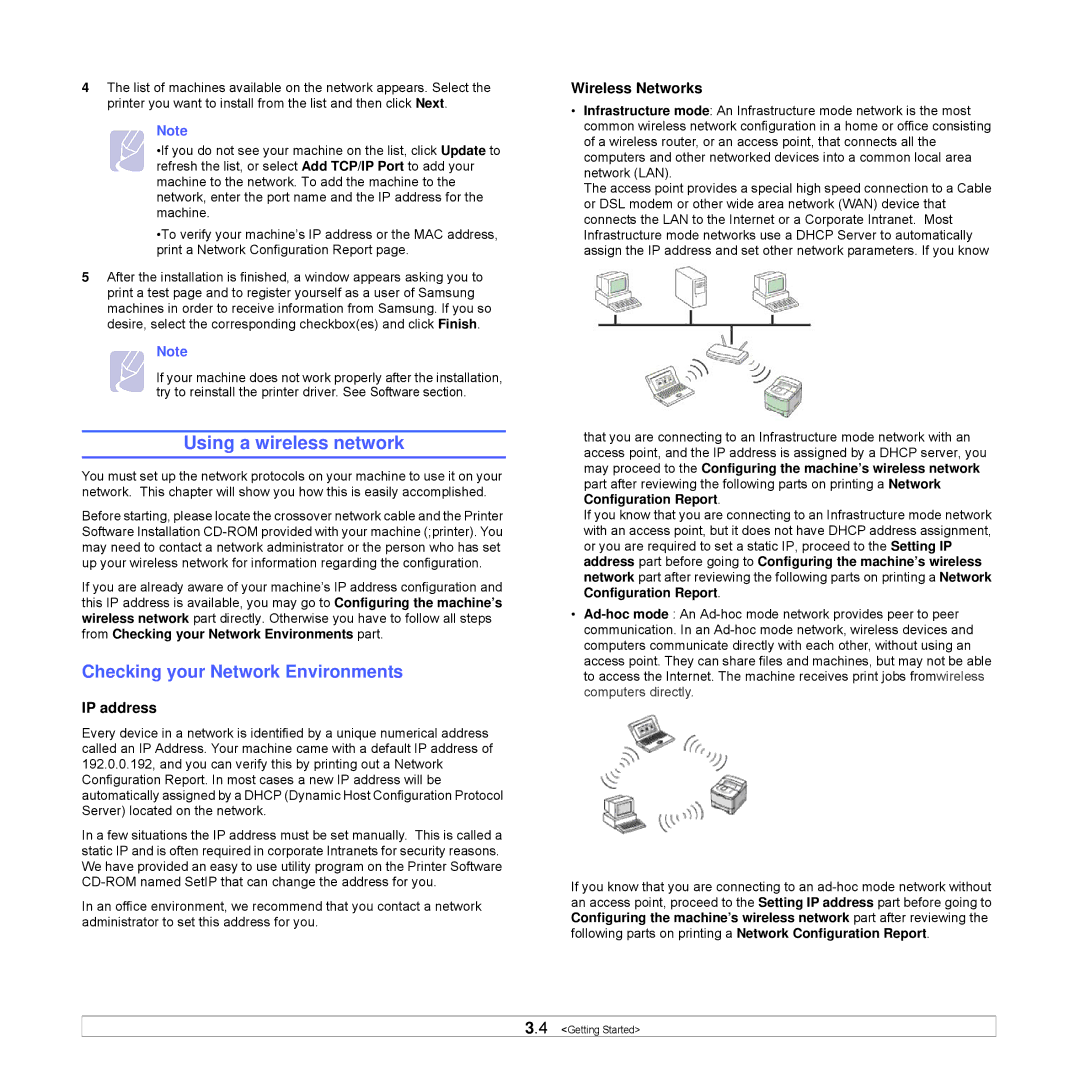
4The list of machines available on the network appears. Select the printer you want to install from the list and then click Next.
Note
•If you do not see your machine on the list, click Update to refresh the list, or select Add TCP/IP Port to add your machine to the network. To add the machine to the network, enter the port name and the IP address for the machine.
•To verify your machine’s IP address or the MAC address, print a Network Configuration Report page.
5After the installation is finished, a window appears asking you to print a test page and to register yourself as a user of Samsung machines in order to receive information from Samsung. If you so desire, select the corresponding checkbox(es) and click Finish.
Note
If your machine does not work properly after the installation, try to reinstall the printer driver. See Software section.
Using a wireless network
You must set up the network protocols on your machine to use it on your network. This chapter will show you how this is easily accomplished.
Before starting, please locate the crossover network cable and the Printer Software Installation
If you are already aware of your machine’s IP address configuration and this IP address is available, you may go to Configuring the machine’s wireless network part directly. Otherwise you have to follow all steps from Checking your Network Environments part.
Checking your Network Environments
IP address
Every device in a network is identified by a unique numerical address called an IP Address. Your machine came with a default IP address of 192.0.0.192, and you can verify this by printing out a Network Configuration Report. In most cases a new IP address will be automatically assigned by a DHCP (Dynamic Host Configuration Protocol Server) located on the network.
In a few situations the IP address must be set manually. This is called a static IP and is often required in corporate Intranets for security reasons. We have provided an easy to use utility program on the Printer Software
In an office environment, we recommend that you contact a network administrator to set this address for you.
Wireless Networks
•Infrastructure mode: An Infrastructure mode network is the most common wireless network configuration in a home or office consisting of a wireless router, or an access point, that connects all the computers and other networked devices into a common local area network (LAN).
The access point provides a special high speed connection to a Cable or DSL modem or other wide area network (WAN) device that connects the LAN to the Internet or a Corporate Intranet. Most Infrastructure mode networks use a DHCP Server to automatically assign the IP address and set other network parameters. If you know
that you are connecting to an Infrastructure mode network with an access point, and the IP address is assigned by a DHCP server, you may proceed to the Configuring the machine’s wireless network part after reviewing the following parts on printing a Network Configuration Report.
If you know that you are connecting to an Infrastructure mode network with an access point, but it does not have DHCP address assignment, or you are required to set a static IP, proceed to the Setting IP address part before going to Configuring the machine’s wireless network part after reviewing the following parts on printing a Network Configuration Report.
•
If you know that you are connecting to an
3.4 <Getting Started>
